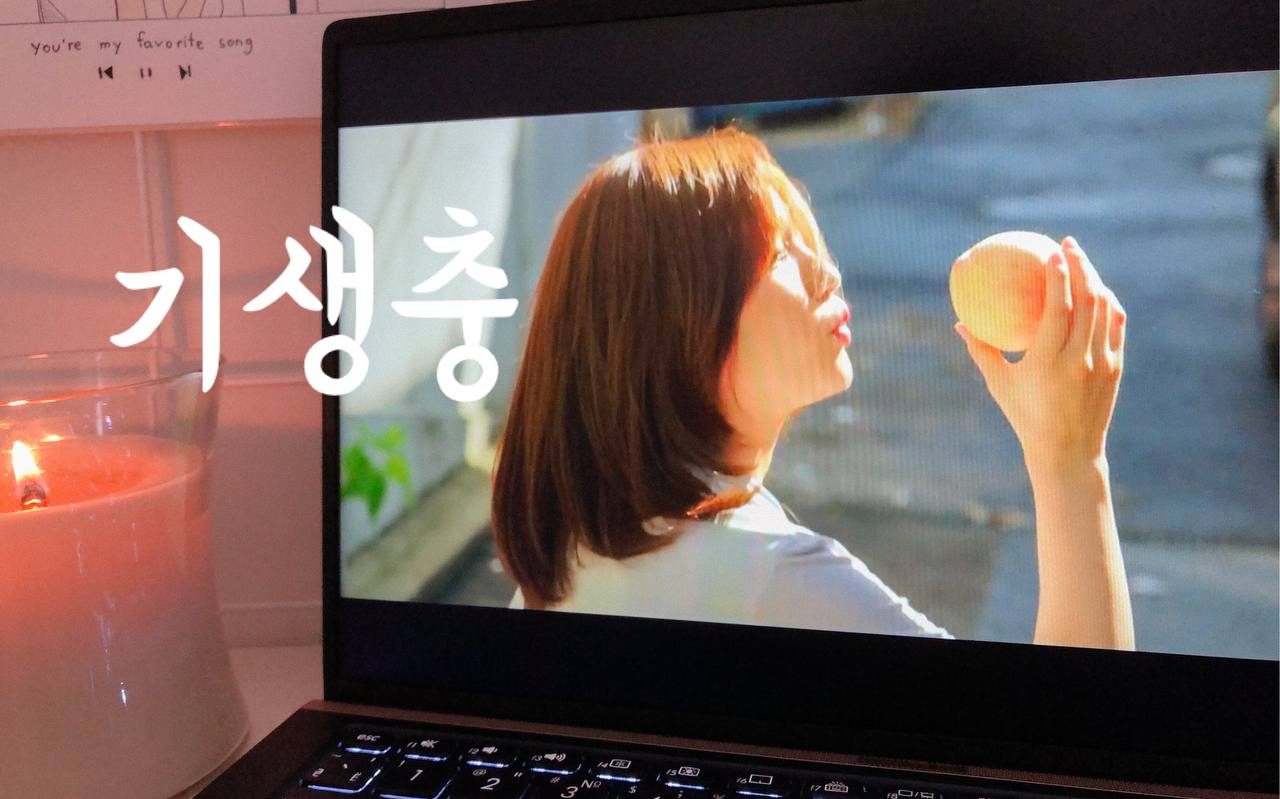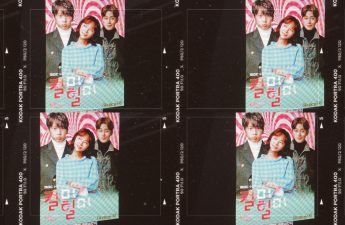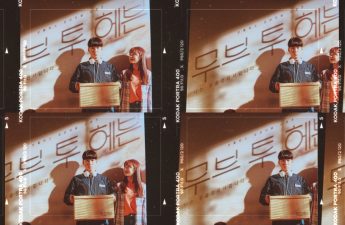In July 2019, I attended the movie “Parasite” premiere, which had just received the Palme d’Or at the Cannes Film Festival. That was the first screening of the film by South Korean movie director Bong Joon-ho in Ukraine, and it was shown in the Korean language with Ukrainian subtitles. Before the film’s start the director’s appeal to the audience was shown: “Please refrain from spoilers, so that those who have not yet seen the film, can fully appreciate it and get imbued with the plot.” I remember well this message and now it is just on point: if you haven’t watched “Parasite” yet, then I advise you to firstly watch the film, which received a huge number of awards, as well as 4 Oscars. Spoilers ahead!
The genre of the film is rather difficult to determine since there are elements of comedy, tragedy as well as a thriller. The term “tense social satire” most closely describes this film. I want to focus on one aspect in particular, the way Bong Joon-ho cleverly utilizes symbols and motifs to maximize the idea of the film, to represent the aspirational beliefs of the characters, as well as the truth they can’t escape.
“Symbols give you a hidden language that emotionally sways the audience.”
The viewing stone
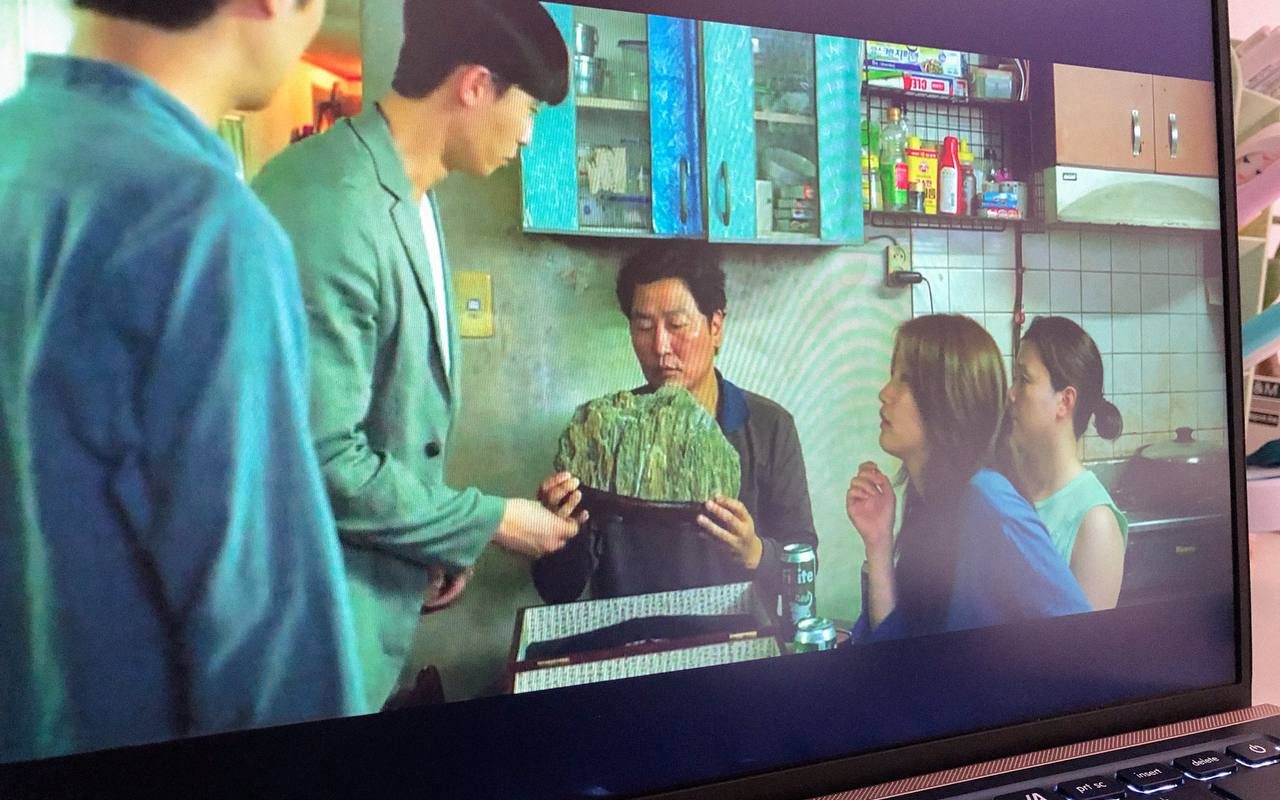
Suseok (수석), also called viewing stones or scholar’s stones, are rocks depicting a landscape. They are known as “gongshi” in China or as “suiseki” in Japan. The viewing stone appears throughout the whole movie. Shortly after the author introduces us to the poor Kim family, their son Ki-woo’s friend Min-hyuk pays them a visit. He brings them a gift – a viewing stone. “This stone here is said to bring material wealth to families”. The captions for Ki-woo’s response say “this is so metaphorical”. However, in the screenplay that line is written as “How perfect for us. Symbolic”. The movie director says that in the beginning of the story the rock represents Ki-woo’s beliefs that he is destined for a more successful future. He is willing to raise the social and material status of his family. Ki-woo is trying to imitate Min, his more successful friend. Min-hyuk disappears in the film after giving Ki-woo the rock, but the rock is sort of the remnant of his character.
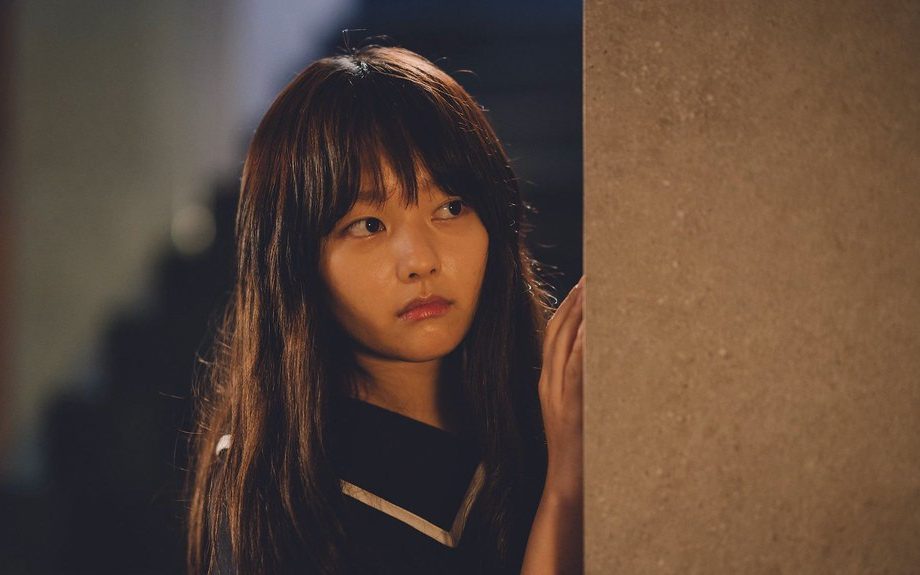
When the film repeatedly brings the symbols back it becomes a motif. The rock became an interesting motif. At the beginning of the movie, after Ki-woo receives the stone, he starts taking bold actions to pursue his aspiration of wealth and status. He started tutoring the daughter of the rich Park family. The Kims were able to get settled and achieve some success. And we notice the stone several times, it appears more than once in the story. But I
would like to draw your attention to the appearance of the stone at a turning point in the plot.
Discovering the door to the bunker in the basement, the Kims find out that previous housekeeper Moon-gwang has been hiding her husband Geun-sae there for 4 years already. The Kims almost revealed their true identities to the Parks, but managed to escape and return to their semi-basement apartment to find it completely flooded due to heavy rainfall. At this point, the family’s aspirations are threatened. And we see the stone again. The rock seems to float right into the hands of Ki-woo. This element of the scene is very unusual, isn’t it? The stone floated up!
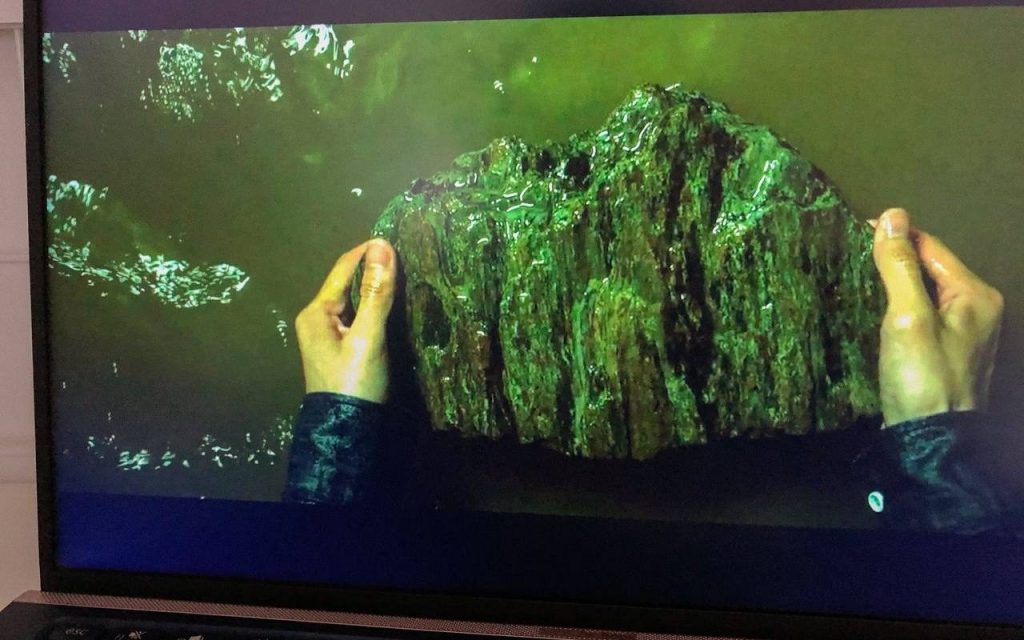
At first, the viewing stone symbolizes the aspiration for wealth and status, whereas now, as Kim Ki-woo clutches it to his chest, we see how he is desperately clinging to this goal that is slipping away.
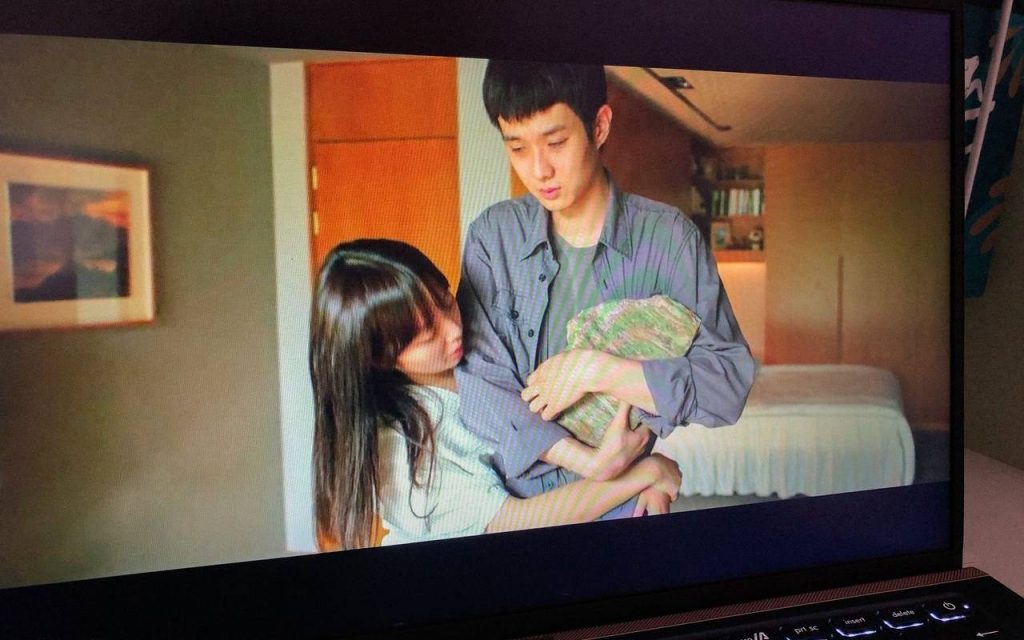
When the story comes to a critical point, the stone acquires two symbolic meanings at once. It can serve as a sign of reconciliation with the former housekeeper Moon-gwang and her husband Geun-sae, who are tied up in the basement. But the viewing stone can also be used as a weapon against those, who know Ki-woo’s true identity and could ruin everything. As a result, the stone, that once was the symbol of Ki-woo’s aspiration to success, becomes a symbol of his destruction, when Geun-sae uses it to break his head.
The last time we see the stone is when Ki-woo, waken from a coma, lowers it into the stream and, as if forever, says goodbye to this goal. The viewing stone has become almost a key symbol that has created an interesting motif in the film. The next no less important symbol is the smell…
Smell
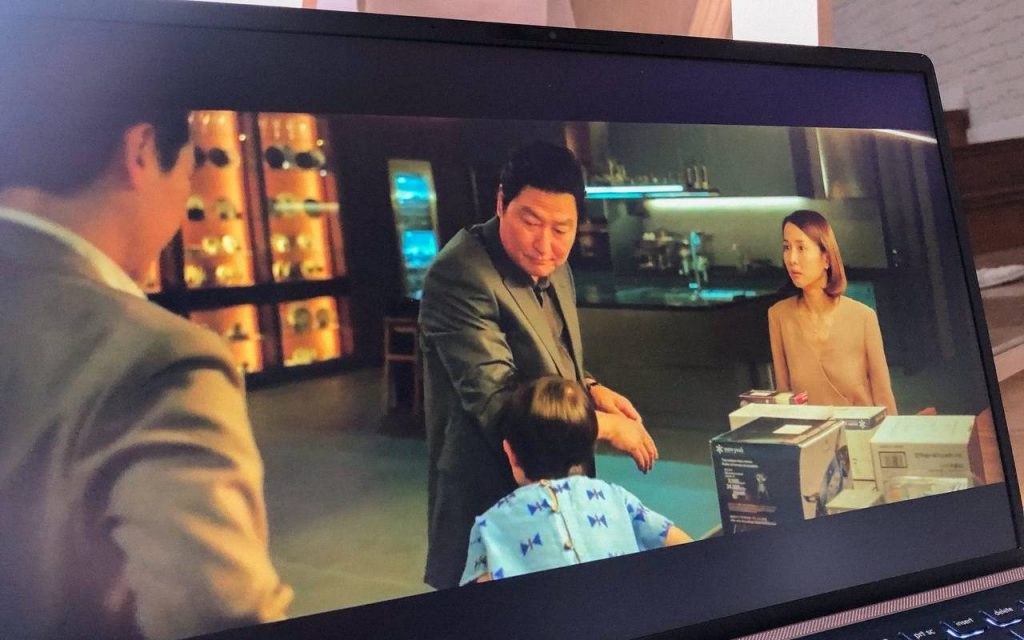
This symbol is introduced into the story when the entire Kim family has infiltrated the home of Parks, masquerading as strangers in various domestic positions. As Bong Joon-ho says, “the jobs that these characters take – feature a rare moment where the rich and poor are together in a very private space and so close to one another that they can smell each other”. When the Park family’s young son notices that all the Kims smell the same, he is unknowingly threatening to reveal their true identities. The smell represents the poverty that the Kims, and particularly the father Kim Ki-taek, can’t escape. It becomes an invisible line that blocks the way for the Kims on the path to gain status equal to the Parks. The motif of the smell returns again and again, reminding Ki-taek of his place in the lower class, pushing him to the breaking point.
“the jobs that these characters take – feature a rare moment where the rich and poor are together in a very private space and so close to one another that they can smell each other”
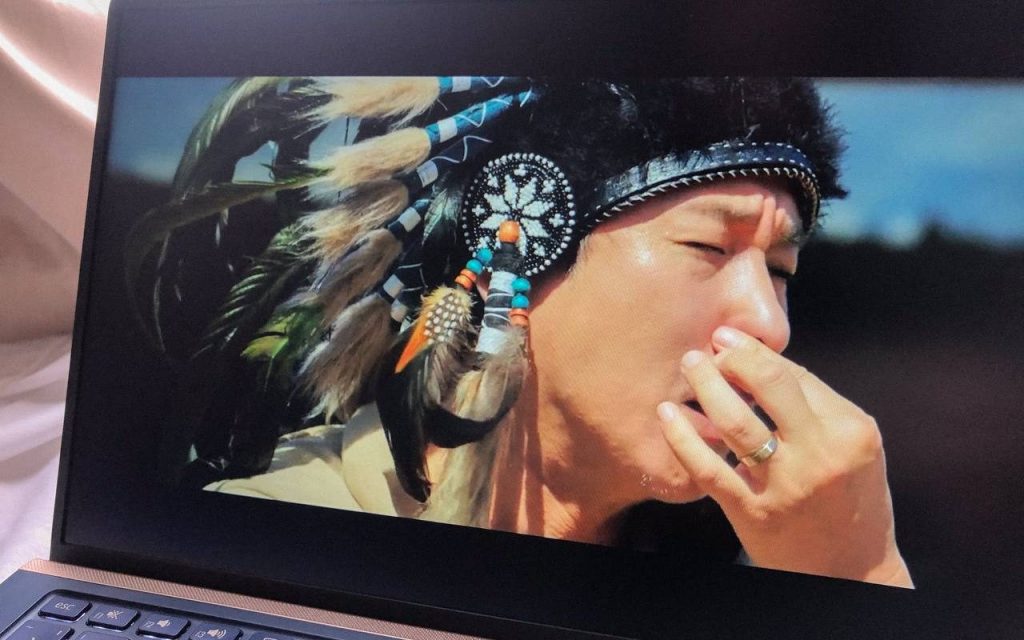
The motif of the smell returns one last time in the film’s violent climax. When Mr.Park has to take the car keys on his own, he covers his nose in disgust. This is a vivid representation of the character’s disgust for everyone below him in status. This was the last straw for Ki-taek’s boiling point. He kills Mr.Park.
These two symbols, the smell and the viewing stone, became key to the story. But besides them, there are no less significant symbols that the director introduces into the plot.
Up/down
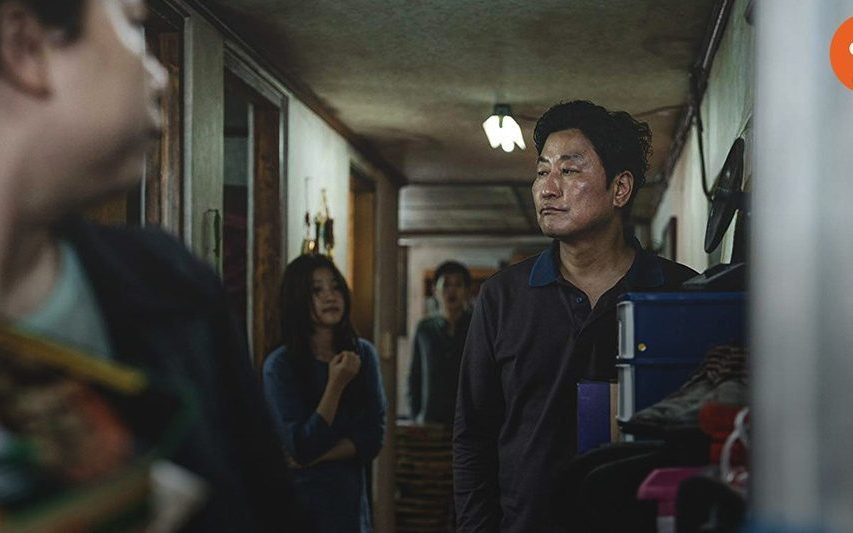
This symbol can be taken quite literally. The Parks’ house resides upon the hills, whereas the Kims live just below ground, from where they hardly see the sunlight. “The poorer you are, the less sunlight you have access to”. Such opposites show us the status of the characters: the rich and successful Parks and poor Kims. But there is someone, who is completely deprived of the Sun, the one who is socially dead. That someone is Geun-sae, husband of a former housekeeper. He is living in a bunker with no direct access to the sunlight. Geun-sae is the personification of that “bottom” into which Kims are afraid to fall. For them, the surface is still reachable.
Water
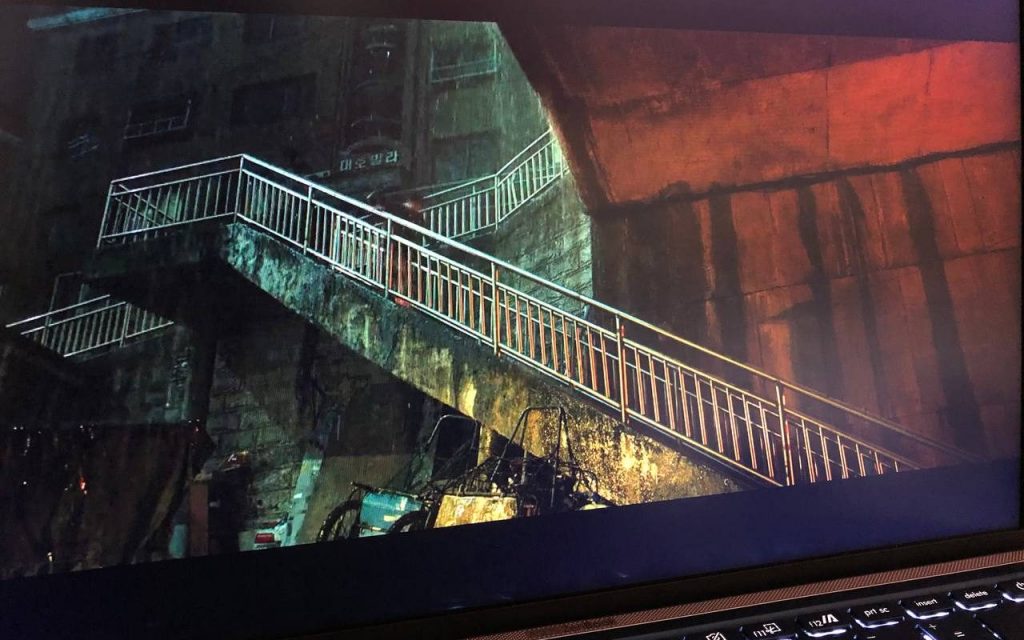
The Kims’ escape from the Parks’ house, as I mentioned before, is a turning point in the plot. It is signaled by a powerful rainstorm which sets a backdrop for the Kims’ shocking discovery: Moon-gwang, the former housekeeper, has been hiding her husband in the bunker under the Parks’ house. The Kim family found out her secret. But their true identities were nearly disclosed as well. As the water flows down, Kim Ki-taek and his children are descending lower and lower. But it’s not just the physical descent to the district, with semi-basement houses that matters. They literally sink to the point of no return.
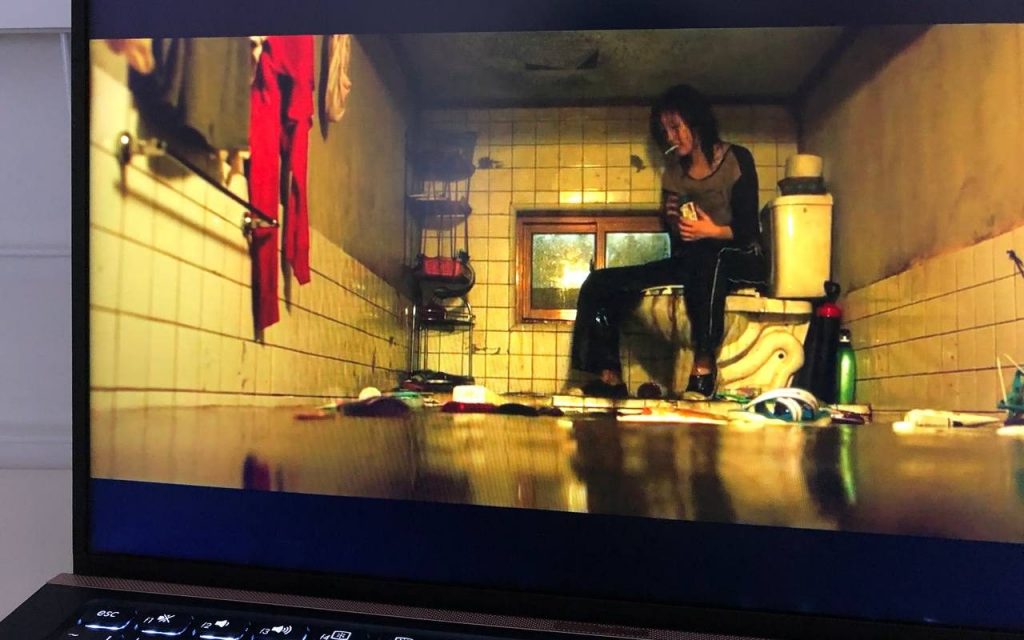
Besides that, water symbolically reflects the different perception of the world by people from different classes. The Kim family lost their belongings after their apartment was flooded. The rain turns out as a catastrophe for them. Which can’t be said about the Park family.
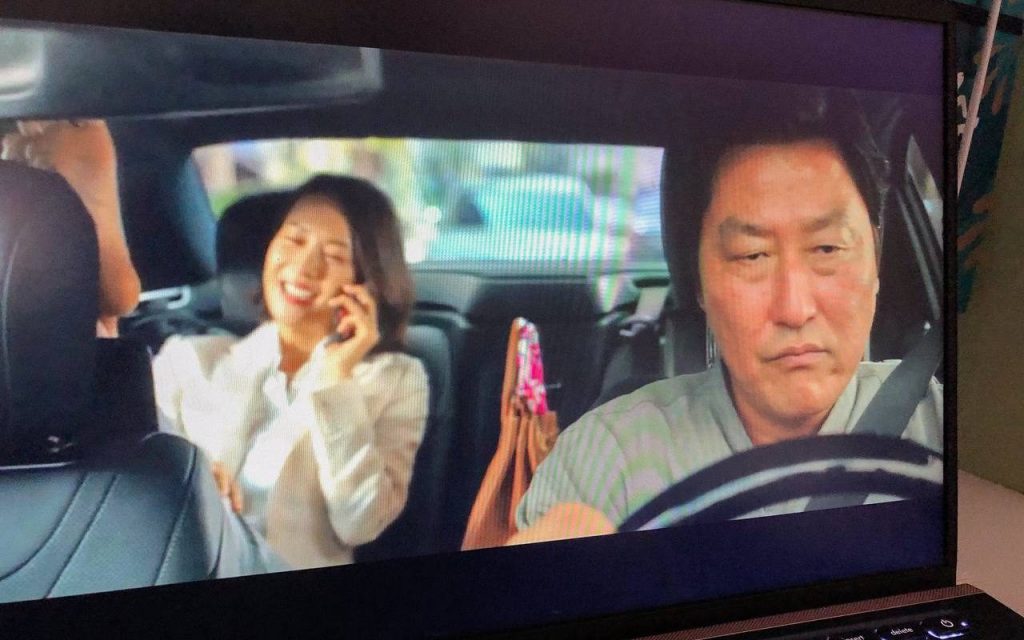
For them it is a minor inconvenience, because their camping trip is rained out. The rain seems to be a blessing for them as it cleared out the air pollution and left a nice blue sky for their outdoor gathering. They “traded” camping for a garden party to celebrate their son Da-song’s birthday. “The rain was a blessing” Mrs.Park says. But not for Kims.
Crane
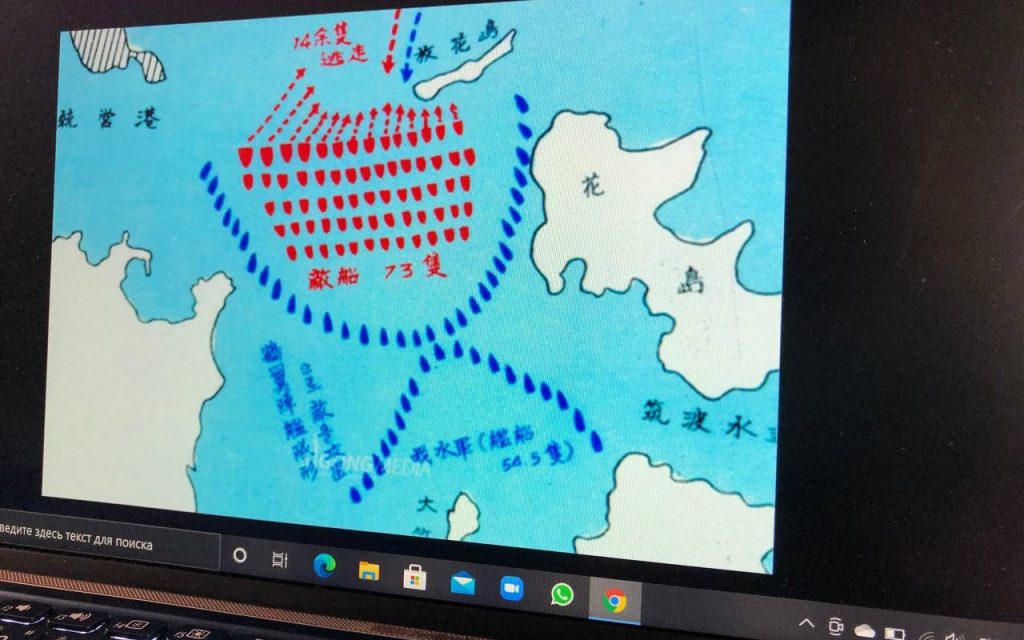
The moment when the class distinction reaches its peak occurs during the Park family’s youngest son’s birthday celebration. This is symbolically reflected in Mrs. Park’s idea of arranging tables for the party in the form of crane wings. What could be strange with that? Such table arrangement demonstrates the famous military manœuvre of Korean naval hero admiral Yi Sunsin at the battle of Hansando – the “crane” formation. In the film’s concept, this table arrangement demonstrates the strength and superiority of the rich over the poor.
Ghost
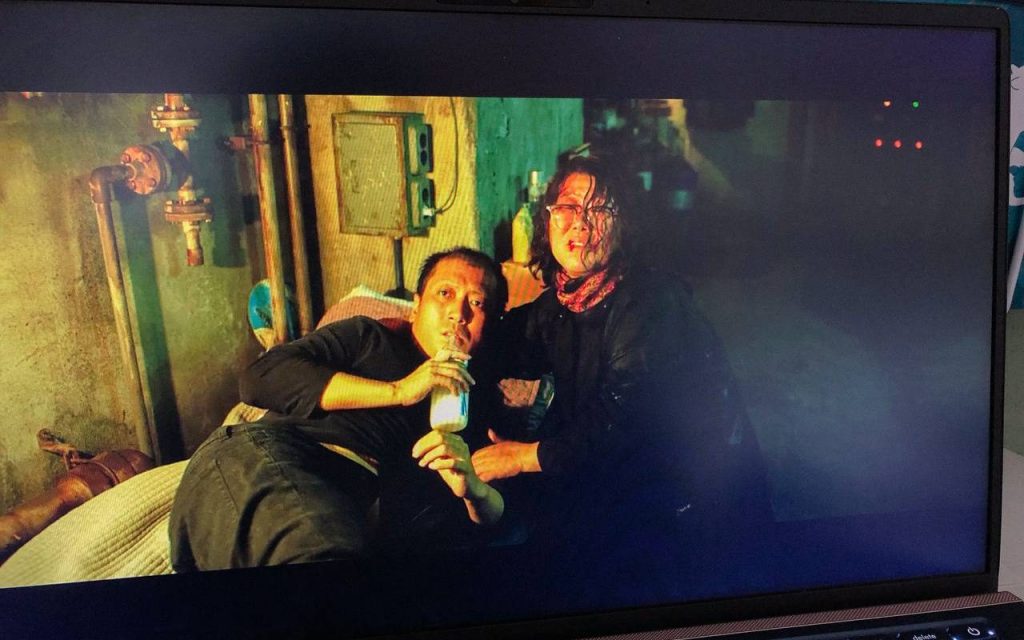
The flickering light is a classic motif of ghost tales. Almost the only way for Geun-sae, the man living in the secret bunker, to communicate with the surrounding world. The inhabitants of the house are unaware of his existence, but invisibly he is with them. Little Da-song, the Parks’ youngest son, seeing Geun-sae on his birthday, mistook him for a ghost. A ghost is a person that is already dead. This symbol was brought up to show that Geun-sae suffered a social death as a result of his poverty.
Native American culture
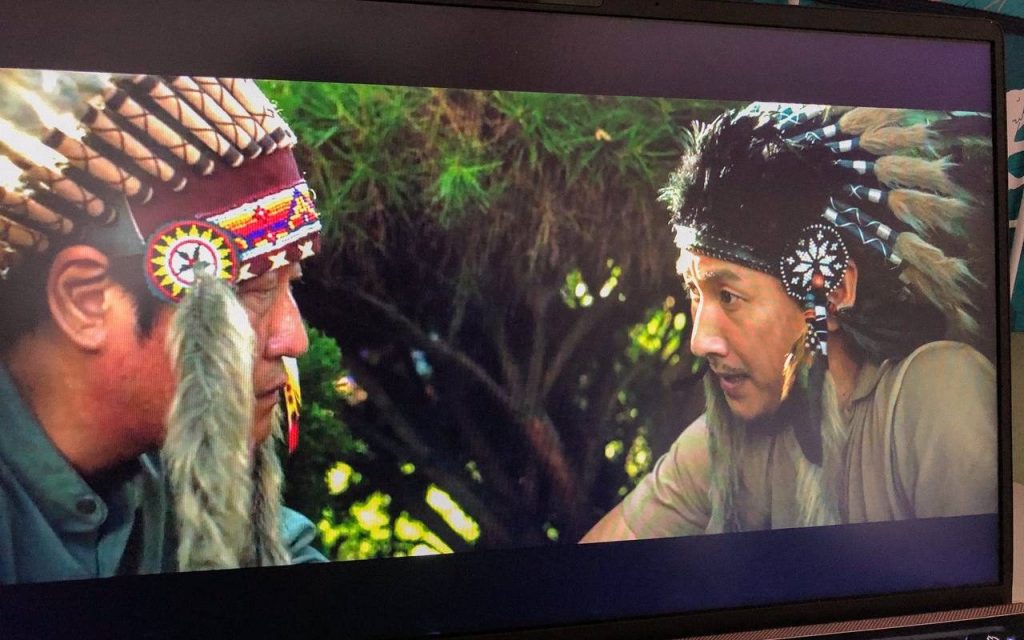
It was no accident that Bong Joon-ho decided to add Park Dasong’s fixation with, quote-unquote, Native American aesthetics to the plot. Thus, the director led us to a turning point: the discovery of Geunse’s hideout. The director showed how the Kims take over the Parks’ house and find out that someone is already living there. Which was analogous to American colonists settling on a land that was already occupied. This symbol comes back in the film’s climax. When I first watched the film, it seemed strange to me that none of the invited guests noticed the appearance of Geun-sae with blood on his face and a knife in his hand. Only then I realized that in the overall concept of the party, the “Native American aesthetics”, the blood on his face happens to resemble the war paint of the Native Americans. Geun-sae was already presented as a ghost, so figuratively he was already invisible to the society.
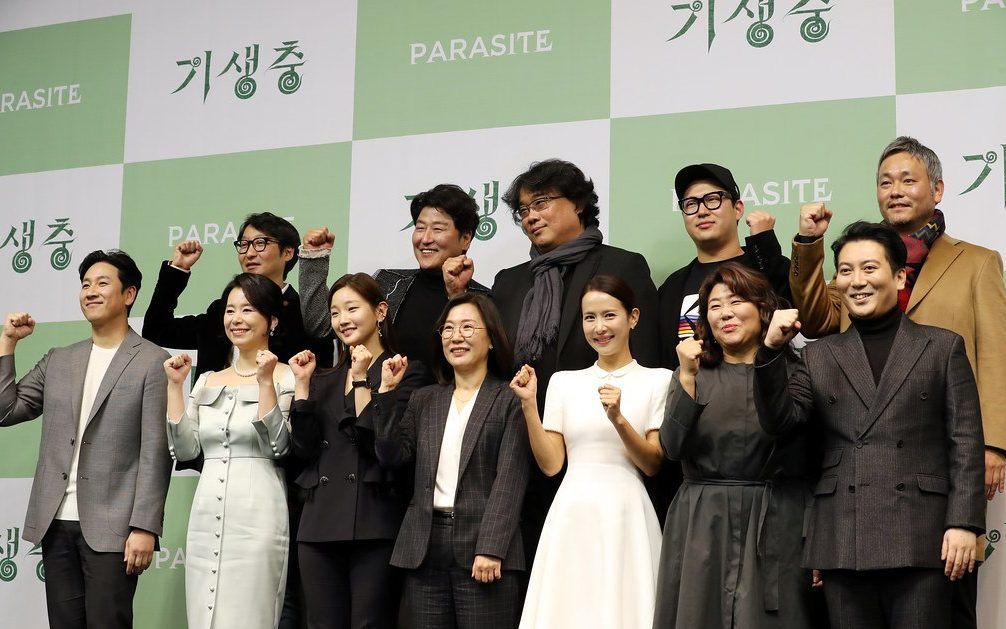
The film “Parasite” raises many of the problems of modern society, ecology and class disparity. In the final scene Bong Joon-ho summarizes his narrative: the status quo he critics in “Parasite” won’t improve in his or his sons’ lifetime; no matter how hard he tries he won’t be able to bridge the gap that has arisen between the classes of society in rapidly developing countries. Although the film’s final scene brings us to the fact that Kim Ki-woo seems to have a plan, to work every day until he can afford to buy the mansion, where his father now is in hiding. Even as Ki-woo fantasizes about reaching higher ground, Bong Joon-ho won’t let us entertain any such illusions. The camera finally tracks down to the semi-basement apartment, where Ki-woo’s family started off. The director described this shot as a sure-fire kill.
If the audience was still clinging to any false hope about Ki-woo’s fate, this final shot would wipe that out once and for all. In the final captions we hear a song called “soju one glass” that’s performed by Choi Woo-shik, the actor who plays Ki-woo. The lyrics written by Bon Joon-ho explain how Ki-woo spends his life trying to earn enough money to buy the Parks’ house. The song’s original title was “564 years”, because that is how long it would realistically take Ki-woo to save up for such a mansion. The movie director made this cruel calculation to show that Ki-woo has no chance.
The article turned out long and if you read it to the end – thank you very much! Korean cinema definitely deserves attention. Thanks to Bong Joon-ho’s unique film, many have taken an interest in Korean cinema. As Geun-sae would say: “Respect!”
Author: Alex Vashchuk
4